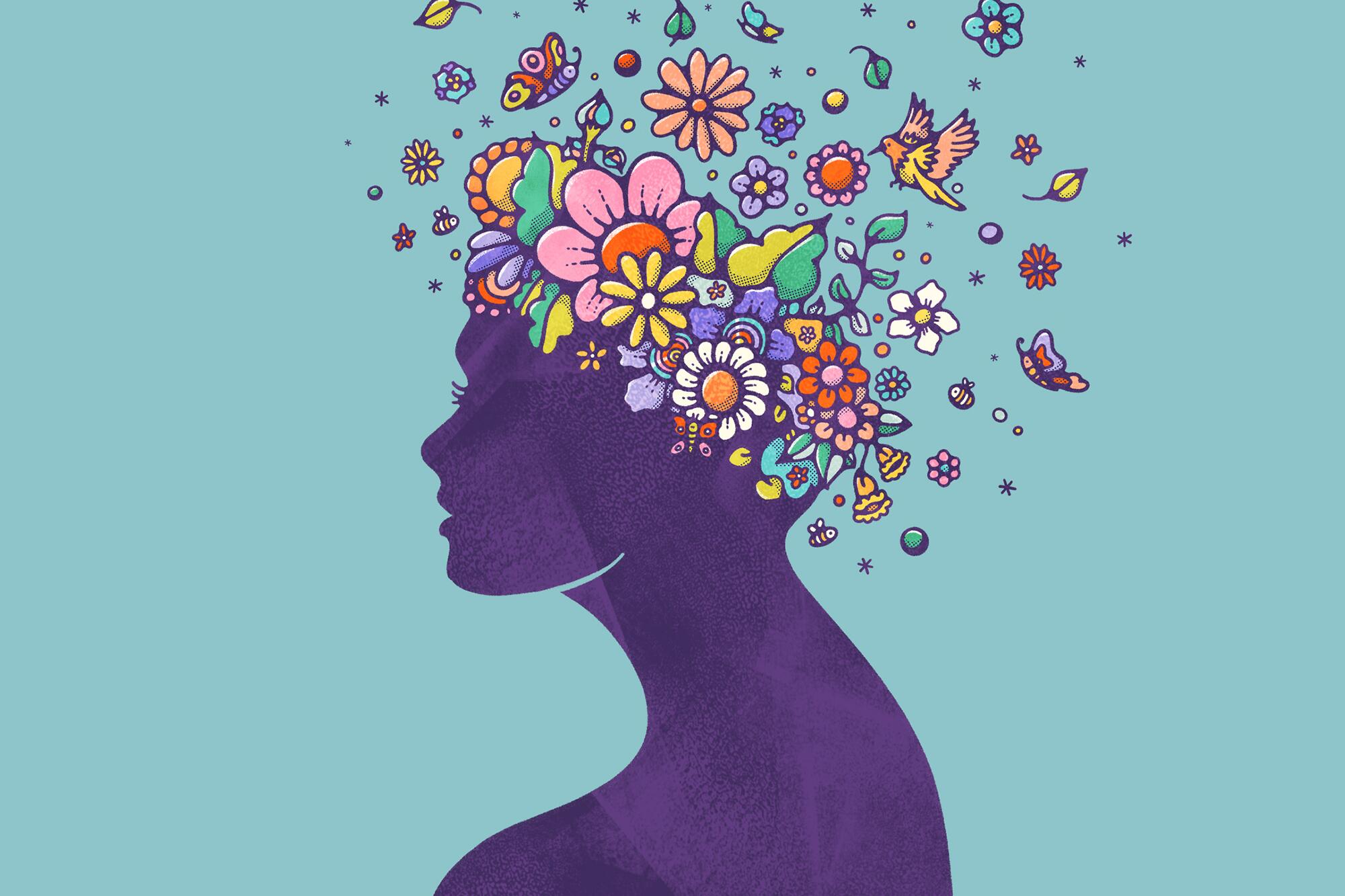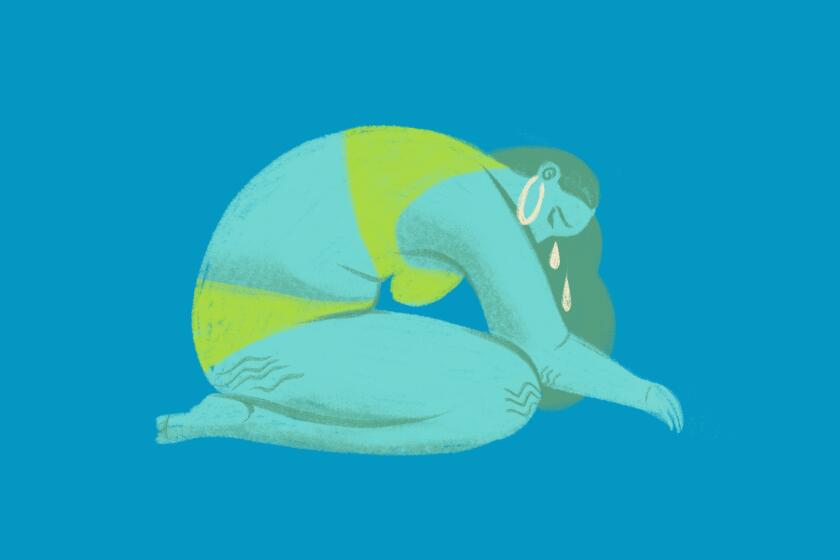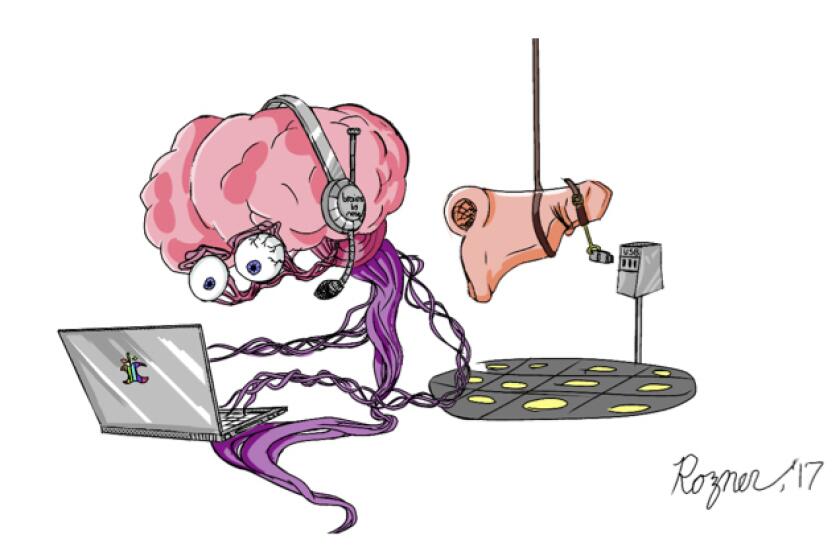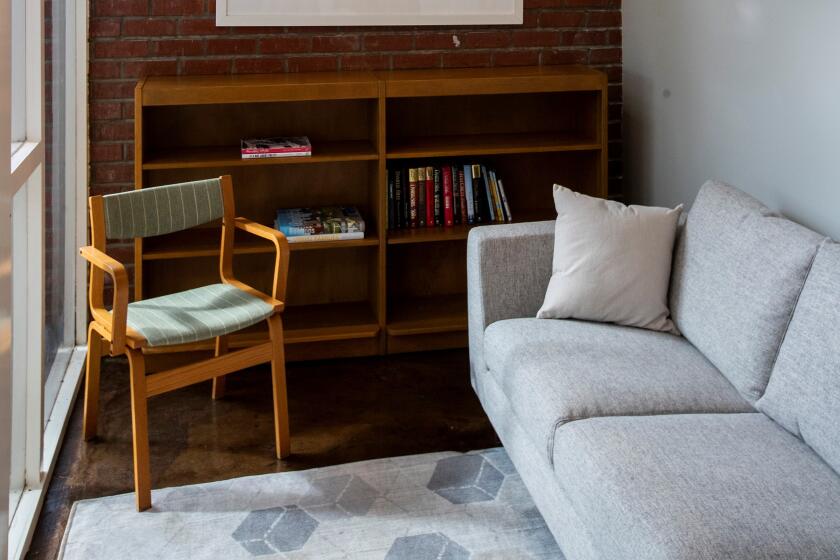
As we enter a new year laden with uncertainty, our mental health and sense of well-being are being tested again. It’s OK (and normal) to fail these tests once in a while.
In the last year, the pandemic has opened up conversations about how to provide more widespread and culturally sensitive mental health support for all ages, especially after U.S. Surgeon General Vivek H. Murthy warned of an emerging youth mental health crisis earlier this month.
Why is it so important to normalize these discussions? Loretta Whitson, executive director of the California Assn. of School Counselors, shared a message she recently received about a young girl who went to see a school counselor after attending a schoolwide mental health presentation and is now in much-needed therapy.
“‘You gave that 12-year-old the courage to save herself,’” she read from the text message.
“I love that,” she said. “The courage to save yourself.”
The coronavirus pandemic, wintertime, the daily stressors of life — it all can take a toll on our mental health. Here are some resources to help you understand therapy, how to find a therapist and more.
Learning to prioritize and manage your mental well-being — especially when the trauma is real and being anxious makes sense — is a process that requires patience. The Times’ Utility Journalism Team has been breaking down the basics of mental healthcare for those who have found the courage to seek help but may not realize what their options are.
There are many oft-cited recommendations for improving your mood, including exercising, maintaining a healthy diet, getting enough sleep and meditating. But different people have different socioeconomic and environmental stressors — and it’s often beneficial to connect with people who relate to your particular struggles and can share coping strategies that have worked for them.
Here are some of the insights we’ve gained from covering mental health this year.
Psychologist Marlene Valter runs a resiliency training for peer-support workers, so those with a history of mental illness can protect their own mental health while helping recovery patients. Here are some tips for anyone facing daily stressors.
Find mental health care wherever (and however) you can
Individual sessions with a therapist are effective for a lot of people. For others, they’re expensive, time-consuming or impractical. But therapy can come in many different forms, and if you can, make it a habit and priority to manage your mental health before you reach a breaking point.
Maybe you could use a dose of (curated) TikTok therapy to learn some simple skills — whether it’s therapist Courtney Tracy (@the.truth.doctor) explaining different types of anxiety, psychologist Raquel Martin showing a grounding technique she uses with her patients or Latinos bonding over how they deal with first-generation trauma.
Maybe what you need is to find your community and tell — or hear — your story. Comedian D’Lo told The Times about the workshops he runs that help South Asian immigrants tell their coming-out stories. He also performs autobiographical solo shows, which can be a therapeutic experience for both him and his fans.
“It is the vehicle of comedy that allows people to look at their own story through my story and not feel like it’s so overwhelming,” he said.
But if you find that you do need more professional help, here are some explainers about what happens in therapy, how to find a therapist who is right for you and whether you might consider getting therapy over video or even text messaging.
If you can’t afford such services, you can look for other options. Your workplace, school or place of worship may have free sessions with counselors. There are hotlines and warmlines to call. There are group therapy options and support groups, including 24/7 peer support provided by L.A. County for free through the iPrevail platform.
There are also mental health smartphone apps — and guidance for how to pick a good one. If you have insurance, you might start with the ones your insurer recommends or provides for free.
Therapy is great — but it can be pricey. Here are some free or low-cost alternatives.
Personalize your mental health care
You need to rest and destress, but what does resting and destressing look like for you? Does it look like sitting in a cross-legged position and chanting mantras, or does it look like hiking up to the highest peak in your area? Does it look like curling up in a blanket and reading, tending to your garden, getting to the ocean to surf or playing your favorite video games? Find the combination that leaves you feeling rejuvenated.
Similarly, if you’re looking for a therapist, what kind of therapist would be best at understanding your challenges? Have you had to say goodbye to a loved one in hospice care? Are you having grief linked to climate change? Is the constant rejection that comes with working in Hollywood getting to you? Are you a teacher who is feeling burnt out?
A therapist’s job is to help you with your goals for mental well-being. So first, figure out your goals.
The founders of the Painted Brain, a peer-support nonprofit, use their experience with managing their own mental illness to help others.
Destigmatizing mental health challenges can start with you
2021 was the year that athletes such as Simone Biles and Naomi Osaka showed us it’s OK to not be OK. Sharing our own stories — even if it’s just to our small circle of loved ones — can encourage empathy and help others feel less alone.
This includes when we are talking to young kids about difficult topics. The American Psychological Assn. encourages parents to acknowledge their own feelings and emotions to show that they’re human.
And don’t forget that destigmatizing mental health challenges includes giving ourselves grace when we’re struggling.
Dave Leon, a therapist and founder of the mental health nonprofit Painted Brain, told The Times that he’s rarely trying to change the patient. Instead, he’s trying to help them change the environment around them.
“What I’ve seen, especially with my own experience with depression — and with people with anxiety, people with personality disorders — is that a lot of it is a very realistic reaction to the crazy, insane contradictions that we’re expected to make to live in this world,” he said.
Welcome back to the darkest timeline. As the days get shorter, it’s the season of SAD and the winter blues. Here’s how to stay on top of your mental health.
Learn how to relax your body quickly when faced with stress
Marlene Valter, psychologist and founder of the mental health company AnaVault, acknowledged that not everyone is able to take a break or walk away when something stressful happens.
Valter suggested getting in the habit of taking five to 10 seconds to scan your body for tension from the top of your head to your toes, relaxing all your muscles along the way. And you can do that throughout the day, 50 times a day, she said.
“Now when you’re facing a stressor, a deadline, a difficult boss or co-worker or family member, you can take five seconds to relax and face the trauma and forever change the wiring of your brain,” said Valter. “This gets you off of an old hamster wheel of anxiety.”
At the end of the day, she said, it’s not about living a stress-free life. It’s about tackling your challenges with a clear mind.
It’s been a rough year, and maybe you are considering therapy for the first, second or fifth time. It takes patience and effort to find the right therapist. Here’s a breakdown of what you need to know.
Always feel free to reassess
If whatever you’re doing to manage your mental health isn’t working, try something else, whether it’s a new form of self-care or another therapist.
“I always tell my clients during the consult that the first few sessions are going to be assessing fit,” Anjali Alimchandani, a psychologist and an advisory board member of the National Queer & Trans Therapists of Color Network, told The Times. “You might feel good with me but, as we are talking more, find that it’s not the right fit, and that’s absolutely OK.”
“If a therapist doesn’t work out, that doesn’t mean therapy is not a good fit,” David Rudesill, a psychotherapist at Cal State Los Angeles, told The Times. “Find another one. Some people do this for several sessions, or even for years, and then they drop out, they stop going or they make an excuse, and it’s unfortunate, because something didn’t change that they wanted to change.”
Reassessing your situation, your decisions or your purpose can also be helpful. Therapist Brian Torres works with clients in the entertainment industry who feel trapped, and he encourages them to consider a career Plan B, even if it’s just as a thought exercise.
“If you start this inquiry about what else is there, you may feel less stuck,” Torres said. “I try to just slowly make room for what else could bring you happiness.”




















